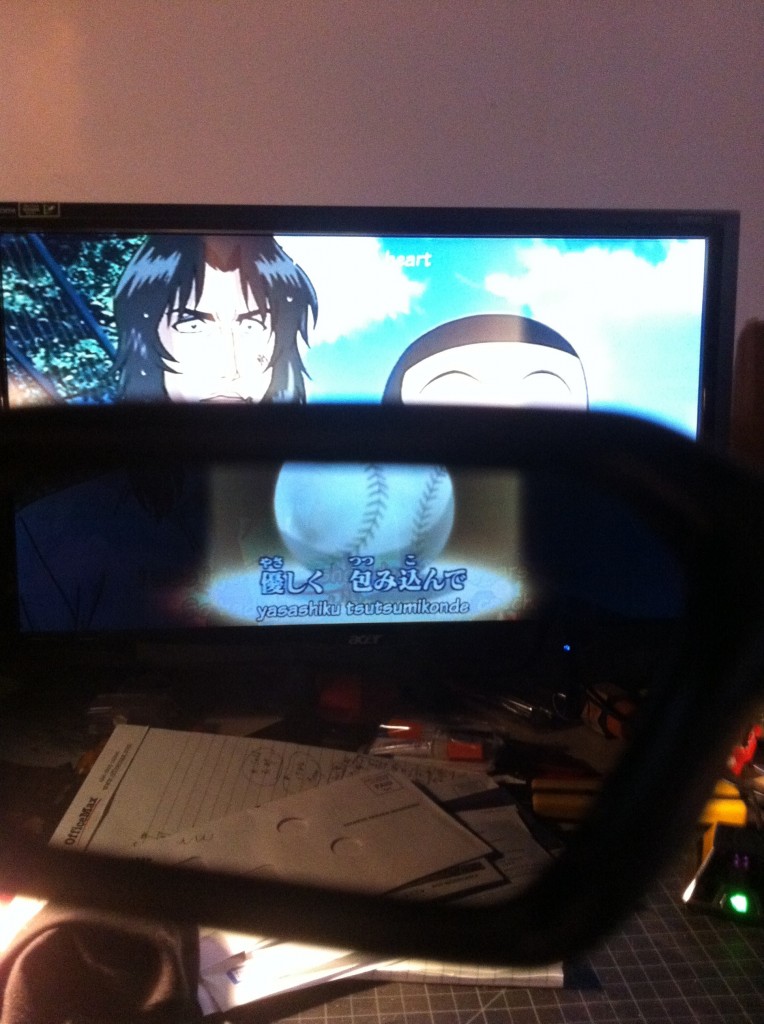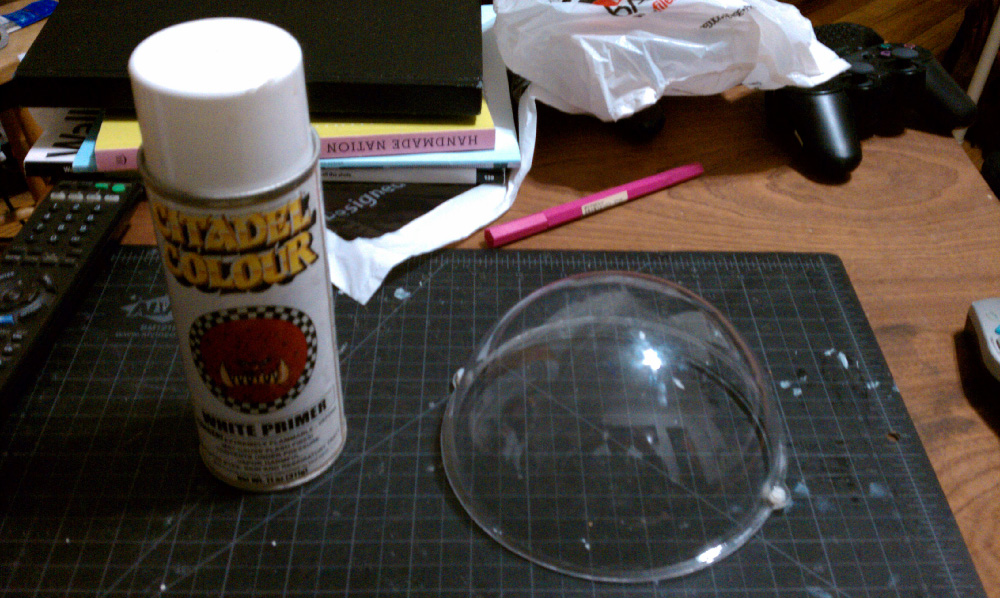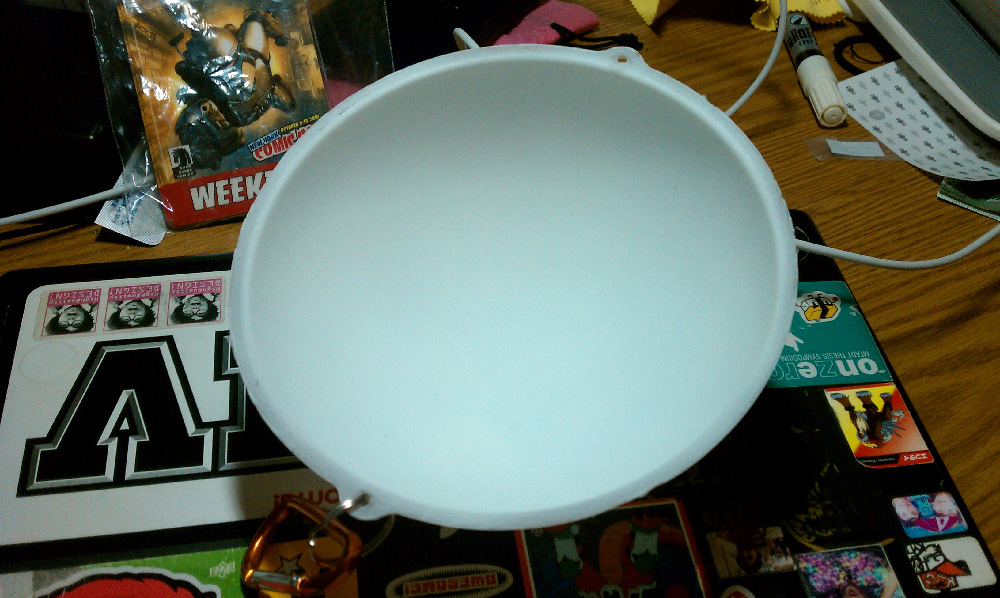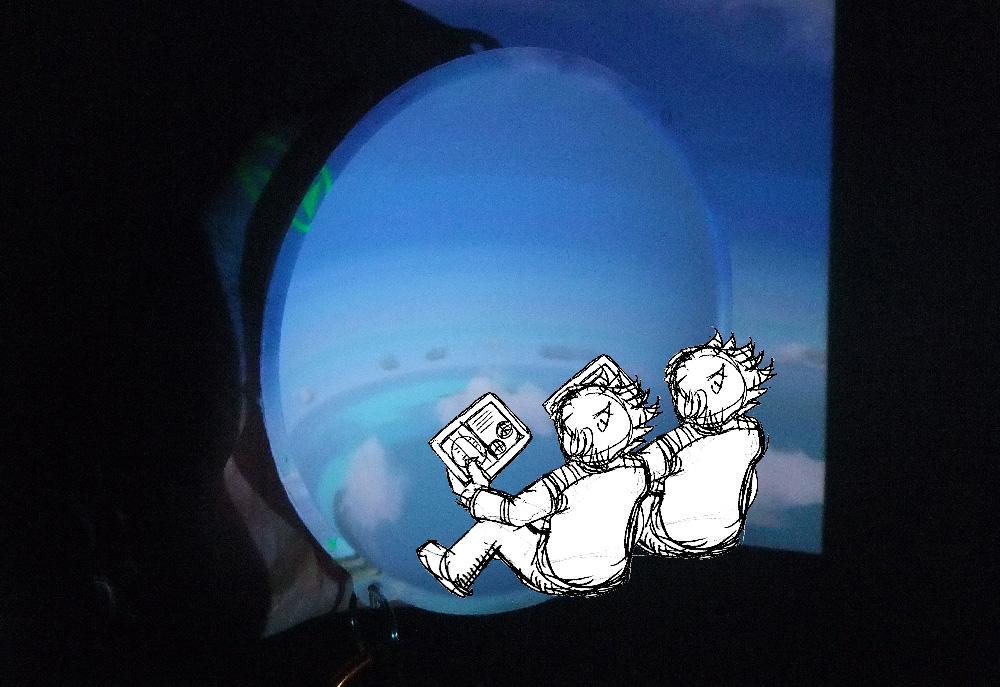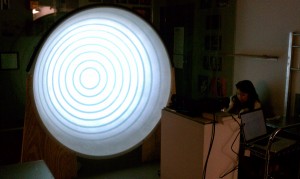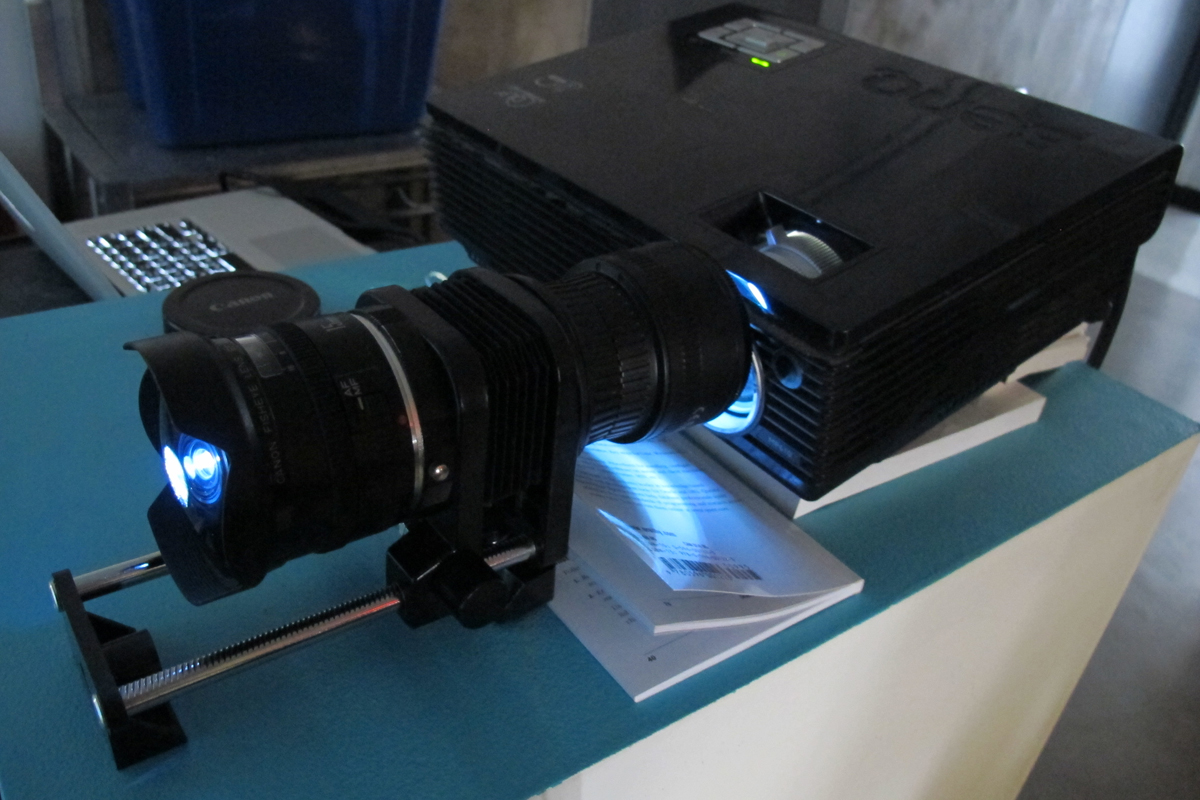This semester I was given the opportunity to lead an experimental UX design class in BFADT to reimagine the commercial airline cockpit in partnership with General Electric (GE). In our initial research we realized how little did the cockpit technology evolved in the past 70 years. Newer and thinner devices are being cramped onto the vintage interface penal. Besides safety concerns, most of these modular devices are manufactured by different companies therefor the data are redundant and unorganized. However, involving human factor inside of machine-based interaction is a way to reduce the mechanic error down to 1/1000,000,000 which is the standard for commercial airline grade electronics. Our main goal is to shift the current engineer centered design to an user-centered one.
Student presentations:
Building the cockpit dome:
Before we decided to build a live size dome for this class, we tested with a mini one. The concave nature of a dome projection is like poking through the wall between reality and the virtual world. The result is stunning and definitely immersive with all the clouds flying by pilot’s feet.
Many thanks to Dave Pentecost and his post on homebrew dome lens. I am using an identical set-up to his with a Canon 15mm f/3.5 fisheye lens and a Canon 50mm f/1.8 II lens. It was a great moment to see the projection in focus, now I want to look for a shorter focal length fisheye lens and a smaller aperture 50mm lens to increase the brightness, and to have the projector even closer to the vertical dome.
04/15/24 The link above is dead, check this one out, similar method:
https://www.lss-planetariums.info/index.php?lang=en&menu=projector&page=projector
Sharing screen with modified 3D viewing classes:
With the technology behind most of the 3D TVs, it is possible to display two channels of information on one shared screen. The 3D viewing device that Panasonic, Sony and NVIDIA used for their 3D TV are called ‘shutter glasses’. Basically, these glasses alternately shut off the left eye and right eye, while the TV is alternating between two video channels at the same time, one for each eye. If we take this idea of channel alternation further, we can create a custom shutter glasses that only view one of the two channels. I tested it with NVIDIA 3D Kit and it works nicely. During the flight, one channel can be used to display all the necessary data, while the other one can be used for flight simulation training or entertainment.
